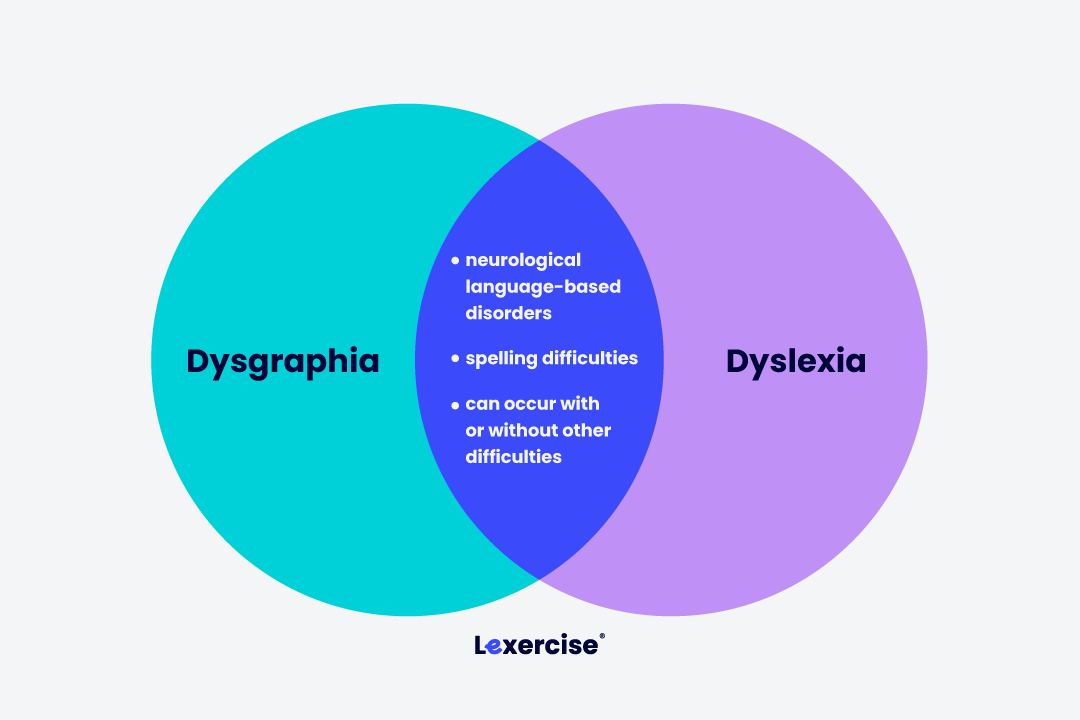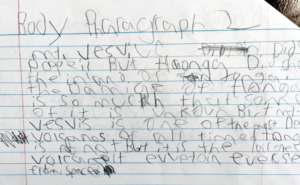Dyslexia and Dysgraphia: Same or Different?
Written by Sandie Barrie Blackley, Speech-Language Pathologist
Published on August 19, 2024
Dyslexia and dysgraphia are two distinct learning challenges, though they often get confused. Dyslexia primarily affects reading skills, making it difficult to decode words and understand written text. In contrast, dysgraphia impacts writing abilities, leading to difficulties with handwriting, spelling, and organizing thoughts on paper. The most important difference between the two is that dyslexia revolves around problems with reading and language processing, while dysgraphia focuses on challenges with writing and motor skills. Understanding these differences helps in providing the right support and interventions for each condition.

What is the Connection Between Dyslexia and Dysgraphia?
Dysgraphia typically involves difficulty with handwriting, spelling, and sentence formulation. Dyslexia and dysgraphia often occur together. Writing requires memory for the movement path for each letter as well as for spelling, sentence formulation, and sequencing ideas so children with working memory and/or attention deficits can have particular difficulty with writing skills. Dyslexia and dysgraphia are both neurological language-based disorders, and they often overlap. In both disorders spelling is a particular weakness. Both language disorders can occur by themselves or in conjunction with other difficulties.
Connect with a Dyslexia Teletherapist for a Free Consultation
Identifying Dyslexia and Dysgraphia
What is Dyslexia?
The National Institute of Child Health and Human Development (NICHD) defines dyslexia as “a specific learning disability that is neurobiological in origin. It is characterized by difficulties with accurate and/or fluent word recognition and by poor spelling and decoding abilities.” In essence, dyslexia is a neurological condition causing difficulty reading, writing, and spelling words. Dyslexia is a prevalent condition, affecting about 20% of people.1
Below you will find some of the common signs of dyslexia:
Difficulty with:
- Consistent pronunciation of some words
- Learning letter names and their sounds
- Guessing at words instead of sounding them out
- Blending a sequence of sounds to pronounce a word
- Reading aloud
- Reading fluently enough to comprehend
- Completing longer reading assignments
- Spelling
- Learning a foreign language
What is Dysgraphia?

Dysgraphia is a language-literacy disability that can be diagnosed and treated. It comes from a Greek term that means, literally, difficulty (dys) writing (graph). Dysgraphia pertains mainly to writing by hand (as opposed to keyboarding).
Below you will find some of the common signs of dysgraphia:
Difficulty with:
- Forming letters consistently and legibly (especially lowercase letters)
- Illegible and/or slow handwriting
- Copying letters, numbers and words
- Spacing words and sentences on the page
- Random, inaccurate use of uppercase and lowercase letters
- Spelling
- Formulating grammatical sentences
- Using sentence punctuation
- Organizing and completing writing assignments
If your child is exhibiting any of these signs and you would like to learn more about how we can help, you can contact us on this page or take one of our free tests here.
Treating Dysgraphia and Dyslexia
Can Dyslexia Be Cured? Can Dysgraphia Be Cured?
Dyslexia and dysgraphia are often genetic and, while they cannot be “cured” they can both be overcome using structured literacy methods.
The following instructional elements are often used to help people effectively overcome dyslexia:
- Explicit – directly and clearly explaining how and why words are pronounced and spelled as they are
- Systematic and Cumulative – having a definite, logical sequence of concept introduction and concept review
- Structured – having clear, step-by-step procedures for introducing, reviewing, and practicing concepts
- Multisensory – engaging attention using more than one sense (e.g., visual, auditory, kinesthetic)
- Emotionally Sound – recognizing and managing the anxiety, fatigue and negativity that can accompany learning struggles
The Lexercise Structured Literacy Curriculum™ follows these guidelines to help struggling readers and writers, including those with dyslexia and dysgraphia, meet their academic potential. If you think your child may be dyslexic or dysgraphic and you want to get them effective help contact us or get started with our free dyslexia screener or our dysgraphia test.
1 What Is Specific Learning Disorder? American Psychiatric Association
Improve Your Child’s Reading
Learn more about Lexercise today.
Schedule a FREE
15-minute consultation


